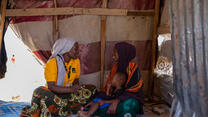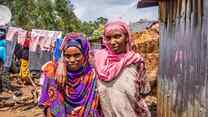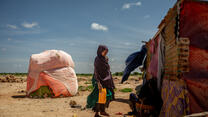WHO WE ARE
The mission of the International Rescue Committee (IRC) is to help people whose lives and livelihoods are shattered by conflict and disaster to survive, recover and gain control of their future. The IRC’s vision is to lead the humanitarian field by implementing high-impact, cost-effective programs for people affected by crisis, and shape global policy and practice by sharing our learning and experience with others.
All IRC programs are designed achieve meaningful change in people’s health, safety, education, economic wellbeing and ability to influence the decisions that affect their lives. The IRC maintains a dedicated professional Research, Evaluation and Learning (REL) Technical Unit team to ensure that the organization is both outcomes driven and evidence based in its approach.
What do we mean by outcomes?
The IRC has made a commitment to focus on the impact we have on the communities we serve by making measurable improvements in five outcome areas: Health, Safety, Education, Economic Wellbeing and Power.
What do we mean by evidence?
Evidence refers to information that is systematically obtained and analyzed to determine whether, how and why a given intervention works. The IRC identifies, prioritizes and uses the best available information from research studies that indicate and explain causal impact. We generate evidence using rigorous methods that answer the most critical questions for action.
WHY OUR WORK MATTERS
The IRC’s goal is to have all its programs be either evidence-based or evidence-generating by 2020. Programs built on a strong foundation of evidence about what does and does not work are most likely to result in meaningful improvements in people’s lives. The IRC is committed to understanding and applying the best available evidence to our programs in order to achieve outcomes for clients affected by conflict and crisis.
WHAT WE DO
IRC practitioners provide technical assistance to more than 30 country programs. Technical advisors stay abreast of the best available research and practices in their respective fields and share these with the IRC’s frontline teams. They also lead advocacy strategies to encourage partners and policy makers to adopt the interventions proven to be effective based on our research and experience.
The IRC recognizes that delivering effective programming requires grounding the choice and design of our interventions on evidence- based theories of change.
Theory of Change
A theory of change is a set of evidence-based causal hypotheses that articulate the necessary steps required to achieve a specific outcome.
We design outcome-driven and evidence-based projects by systematically using theories of change in all our new project designs. We apply a set of standard indicators across the organization to monitor interventions and measure the extent to which we achieve our intended outcomes.
To determine which specific interventions best realize the intended outcomes, we draw on causal evidence from systematic reviews. Along with context analyses, continuous client feedback and implementation research also inform our project designs.
During the past year, the IRC has systematically searched for rigorous, applicable research in crisis-affected contexts that explore the interventions that work best for the outcomes on which we focus. The results of reviewing and consolidating this evidence are now formulated in the IRC’s Evidence Maps, an adaptation of the Gap Map approach developed by the International Initiative for Impact Evaluation.
Evidence Maps
Evidence Maps are comprehensive documents that highlight both the availability of and gaps in evidence within our theories of change for achieving specific outcomes.
The IRC created Evidence Maps to improve staff and humanitarian sector colleagues’ ability to successfully access, scrutinize and apply research for greater program impact and effectiveness. Specifically, Evidence Maps assemble peer-reviewed, published research in the areas of health, education, economic wellbeing, safety, power, cash transfers, service delivery and humanitarian emergencies to best determine what does and does not work when considering potential humanitarian interventions. Given their level of detail, Evidence Maps cater to both reflective and real-time application, enabling the IRC and other humanitarian practitioners to easily explore studies, identify gaps in evidence, and find summaries of key details.
One example of how the IRC shifted from a perceived ‘best practice’ to an evidence-based approach is the change of focus from community-centered child protection interventions—which had no evidence despite being widely practiced—to family-based child protection interventions, which were not widely practiced in the humanitarian sector, but had a strong evidence base in high- income countries. The IRC has since demonstrated the impact of family-based programs across three countries, becoming both a practice- and thought-leader in this sector and delivering better interventions to protect children.



